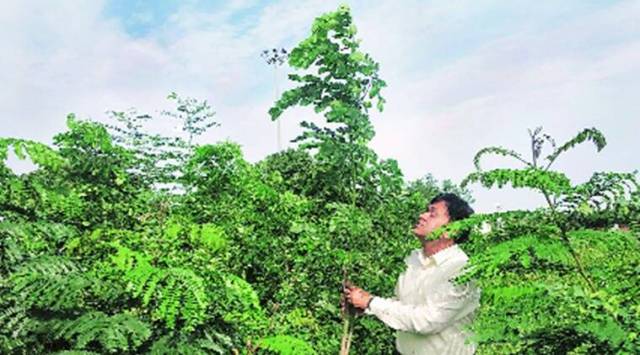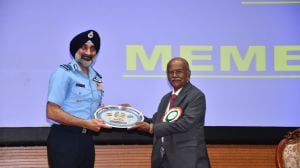Gujarat: KASEZ becomes ‘first green industrial city’ in India
Compared to the 25,000 trees in KASEZ in 2019, the 1000-odd acres has 3.5 lakh trees. Most of these trees have been planted post 2019, using the Miyawaki forestation method.
 Among the various factors, IGBC took into consideration was the usage of worn clothing by KASEZ which is a hub of used clothing recycling industry. (File Photo)
Among the various factors, IGBC took into consideration was the usage of worn clothing by KASEZ which is a hub of used clothing recycling industry. (File Photo)Kandla Special Economic Zone (KASEZ), the oldest export zone in the country, has become the “first green industrial city” in India to receive a platinum rating under IGBC Green Cities Rating for existing cities in the industrial cities category.
“We become the first green industrial city in India to receive platinum rating after a year-long rigorous audit and inspections conducted by IGBC. This has been possible because we have not only increased the green cover in KASEZ, but have managed to grow 68 species of trees and attract 28 varieties of birds — which were also audited and counted — on a piece of land that was once a salt pan with almost no vegetation,” Amiya Chandra, Development Commissioner or KASEZ told The Indian Express.
Compared to the 25,000 trees in KASEZ in 2019, the 1000-odd acres has 3.5 lakh trees. Most of these trees have been planted post 2019, using the Miyawaki forestation method.
“We halted the growth of salt pan beyond Kandla. The planting of trees helped reduce salinity and improved the quality of top soil. Secondly, we have built water harvesting systems. The water became less saline and the growth of the trees improved. Just outside KASEZ, it is still a salt pan right now,” Chandra added.
Among the various factors, IGBC took into consideration was the usage of worn clothing by KASEZ which is a hub of used clothing recycling industry.
“There is a lot of cloth waste which is generated by this industry. The industry was finding it difficult to dispose them off in land fill sites. So we took this cloth waste and used it for mulching during tree plantation,” Chandra said.
To prevent salinity of land from coming into contact with the planted trees, torn clothes are placed in land as first layer before seeding of trees. After seeding, that part of plantation is surrounded by torn clothes which ensures maximum water retention.
Apart from this, KASEZ also used plastic waste to line the artificial water bodies created inside the area to prevent water seepage and mix with the saline water. The SEZ initiatives with solar energy and LED lighting was also among the factors that contributed to the IGBC rating, officials said.












